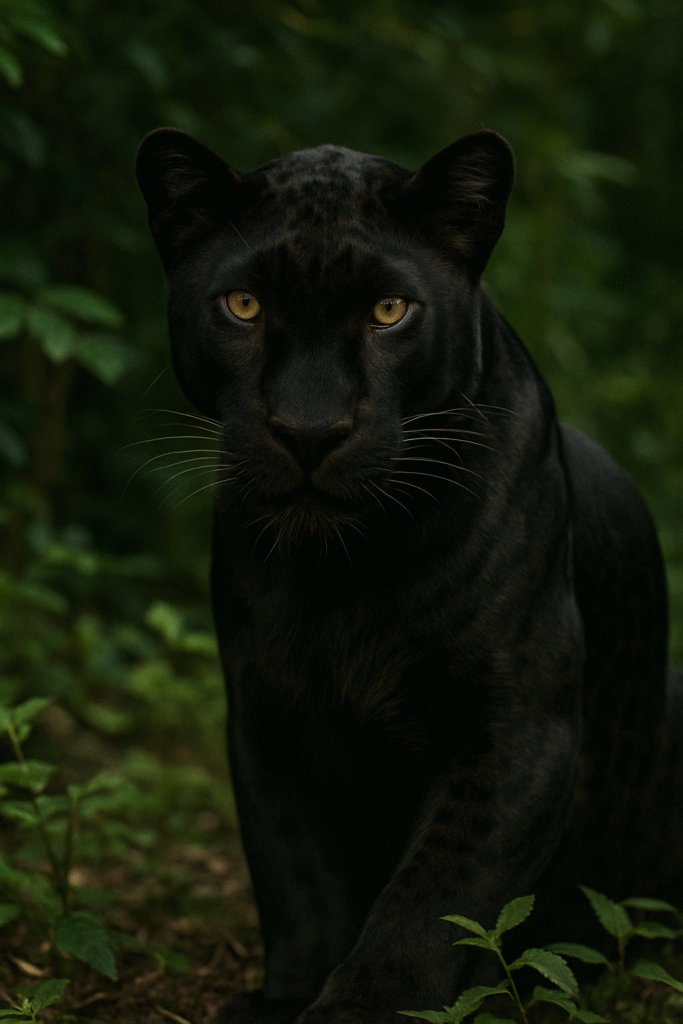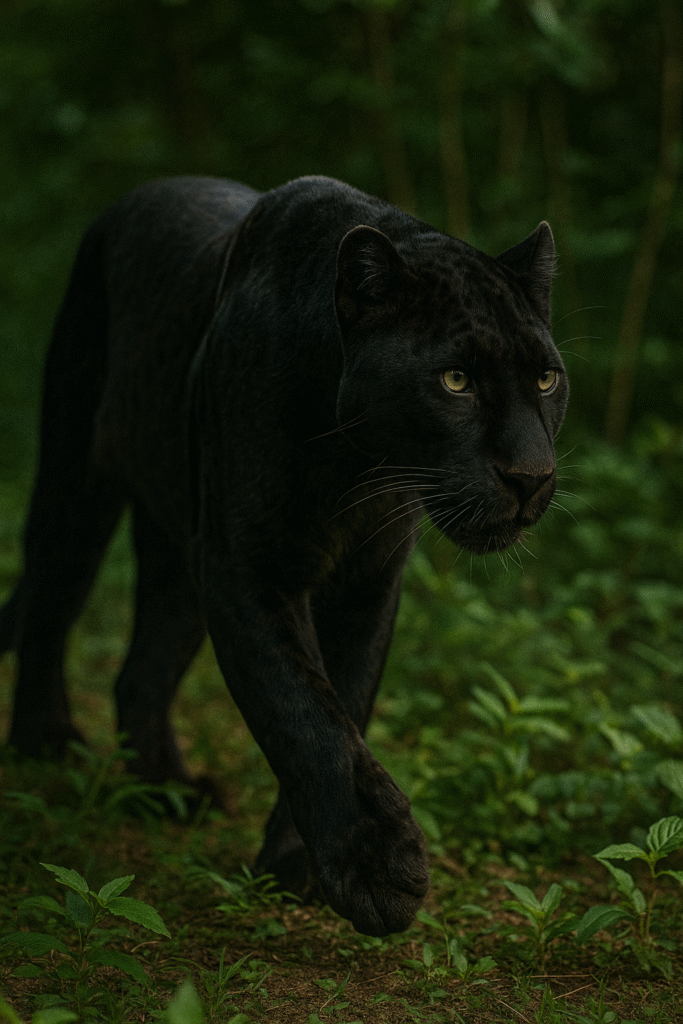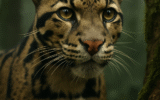In the dense canopy where sunlight struggles to reach the forest floor, there is a presence both feared and revered. The panther—a term that evokes mystery more than taxonomy—has long been the phantom of human imagination. Sleek, black-coated, and near silent, it is less an animal than a shadow given form.
To glimpse one is to see the forest itself come alive. Muscles ripple under velvet fur, eyes burn with an amber glow, and each step is a paradox of grace and lethal power. For centuries, the panther has been predator, omen, and guardian all at once.
More Than a Name
Biologists remind us that “panther” is no single species but a word born of mystery. In the Americas, it may mean the cougar or puma. In Africa and Asia, it is often the black leopard, its coat darkened by a genetic twist called melanism. In the collective imagination, however, the panther transcends classification. It is the embodiment of the unknown hunter—the one you never hear until it is too late.

This ambiguity has only deepened its aura. For indigenous cultures, the panther has been a god of night, a protector of dreams, and sometimes a harbinger of death. For colonizers, it became a symbol of wilderness itself: untamed, elusive, and dangerous.
Predator in the Dark
What sets the panther apart is not just strength, but silence. Unlike lions, who roar their dominance across the savannah, or wolves, who proclaim their unity in howls, the panther kills in near-total secrecy. It does not chase; it stalks. It does not announce; it appears.

In this silence lies its true power. To be prey in the jungle is to live with the knowledge that the panther may already be watching. This awareness ripples through ecosystems, shaping the behavior of deer, monkeys, and boar, reminding us that predators are not only hunters—they are architects of balance.
The Human Imagination
From jungle legends to modern iconography, the panther has become more than animal—it is symbol. In African folklore, it is cunning incarnate. In South America, it is often tied to shamans, crossing the threshold between human and spirit worlds. In modern times, it has been adopted as an emblem of power, resistance, and identity—most famously in the Black Panther movement of the 20th century.
Through each reinvention, the panther retains its essence: the unseen, the untouchable, the spirit that cannot be caged.
Endangered Shadows
And yet, the greatest threat the panther faces is not another predator, but us. Deforestation, poaching, and human encroachment have driven populations into decline across continents. The forests are growing quieter—not because the panther has lost its stealth, but because its habitat is disappearing.
The irony is sharp: the very animal that symbolizes wilderness may vanish because wilderness itself is vanishing.
The Lesson of the Panther
The panther’s silence is not just a hunting strategy; it is a philosophy. In a world obsessed with noise, it reminds us of the power of restraint, of shadows, of unseen influence.

As it slips through forests we may never enter, the panther endures as both reality and myth. Predator, phantom, symbol—it embodies the wild that still resists us. To honor it is to honor the silence of the forests, and to remember that what we cannot see is often what matters most.


Reply